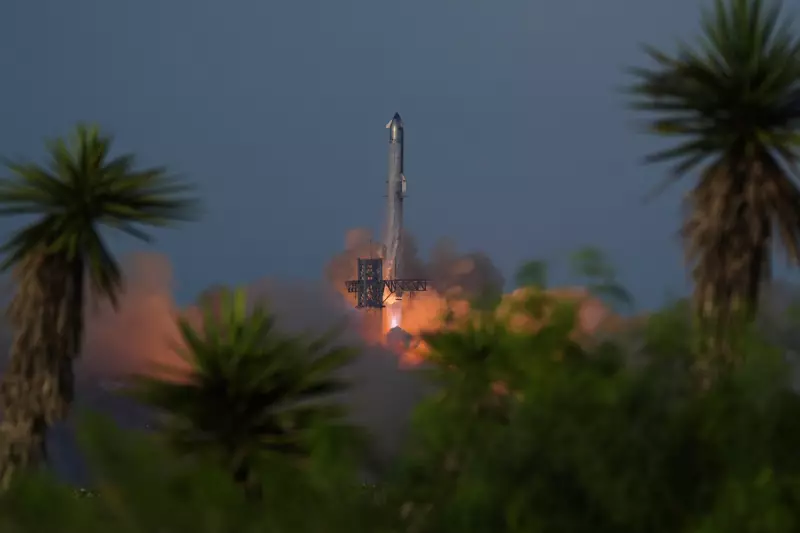
In a spectacular yet unsuccessful test flight, SpaceX's fully-integrated Starship rocket—the most powerful launch vehicle ever built—suffered a catastrophic failure minutes after lifting off from its Texas launchpad. The uncrewed mission ended in a fiery explosion over the Gulf of Mexico, marking a significant setback for Elon Musk's ambitious interplanetary travel plans.
The towering rocket, standing at nearly 400 feet tall, successfully launched from SpaceX's Starbase facility in Boca Chica at approximately 9:28 AM local time. The initial ascent appeared flawless as the 33 Raptor engines of the Super Heavy booster generated an unprecedented 16.7 million pounds of thrust, shaking the South Texas coast with their tremendous power.
Mid-Flight Catastrophe
The mission took a dramatic turn approximately four minutes into flight when the Starship upper stage failed to separate from the Super Heavy booster as planned. Live footage showed multiple engines shutting down before the entire vehicle began tumbling uncontrollably, ultimately triggering the flight termination system that deliberately destroyed the craft.
"We had a successful lift-off and made it through the max-q region which is the area of maximum dynamic pressure," SpaceX officials stated during their live broadcast. "The vehicle experienced a rapid unscheduled disassembly before stage separation."
Mixed Results and Future Implications
Despite the explosive conclusion, SpaceX engineers gathered valuable data on the rocket's performance during its brief flight. The test provided crucial information about engine performance, aerodynamics, and launch infrastructure that will inform future design improvements.
Elon Musk responded to the incident with characteristic optimism, tweeting: "Congrats SpaceX team on an exciting test launch of Starship! Learned a lot for next test launch in a few months."
The Federal Aviation Administration confirmed it will oversee an investigation into the mishap, standard procedure for any launch failure. This marks another hurdle for the Starship program, which faces intense scrutiny as NASA has selected a modified version of the spacecraft for its Artemis moon landing missions.
The Road Ahead
SpaceX's rapid iterative testing approach means another prototype is already in production. The company maintains that such failures are expected during development of revolutionary space technology.
When fully operational, Starship is designed to carry up to 100 people to Mars and beyond, representing humanity's best hope for becoming a multi-planetary species. Despite today's setback, SpaceX remains committed to pushing the boundaries of space exploration through its ambitious testing programme.





